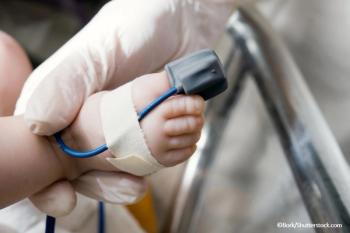
Complex Anorectal Fistula
Fourteen months of intermittent, foul-smelling, perianal discharge prompted a 45-year-old man to seek medical evaluation. He also complained of occasional bright red rectal bleeding and soreness of the perianal region; he denied fever. The patient had undergone surgical drainage for episodes of perianal sepsis 2 years earlier.
Fourteen months of intermittent, foul-smelling, perianal discharge prompted a 45-year-old man to seek medical evaluation. He also complained of occasional bright red rectal bleeding and soreness of the perianal region; he denied fever. The patient had undergone surgical drainage for episodes of perianal sepsis 2 years earlier.
Two perianal fistula openings were noted on the right side of the anus; 1 such lesion was located on the left (A). The digital examination found a palpable internal opening at the level of the dentate line. Sigmoidoscopy revealed a normal distal colon.
During surgery to repair the disorder, Dr Virendra Parikh of Fort Wayne, Ind, discovered that the complex anal fistula communicated with the single internal opening described above (B).
Anal fistula-an abnormal communication between the anorectum and the perianal region-is the chronic manifestation of a suppurative anorectal infection; anorectal abscess is the acute manifestation. These conditions result from infection of the anal glands, which occurs secondary to duct obstruction by fecal material. Anal fistulae also are associated with Crohn disease and HIV infection; rarely, anorectal trauma may induce a fistula.
The primary internal opening of the fistula is found at the dentate line; the secondary, or external, opening is located at the anal verge or elsewhere in the perineum. Multiple openings, as in this patient, are not uncommon. A fistula may be confused with a pilonidal sinus or hidradenitis suppurativa; finding the internal opening during surgery confirms the diagnosis.
Surgical intervention is effective. During surgery, care must be taken to preserve and protect the anal sphincter; injury to the sphincter may result in fecal incontinence.
Newsletter
Enhance your clinical practice with the Patient Care newsletter, offering the latest evidence-based guidelines, diagnostic insights, and treatment strategies for primary care physicians.



















































































































































































































































































